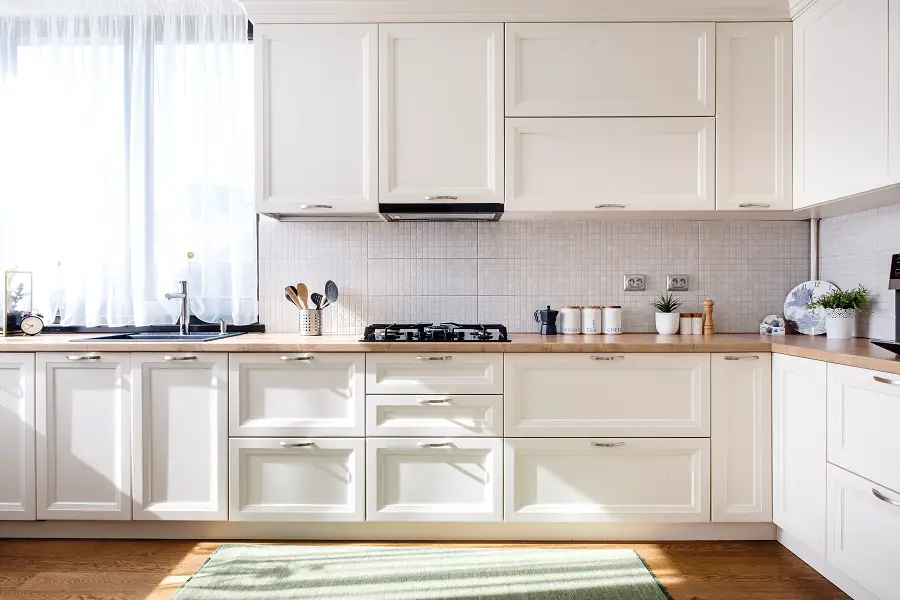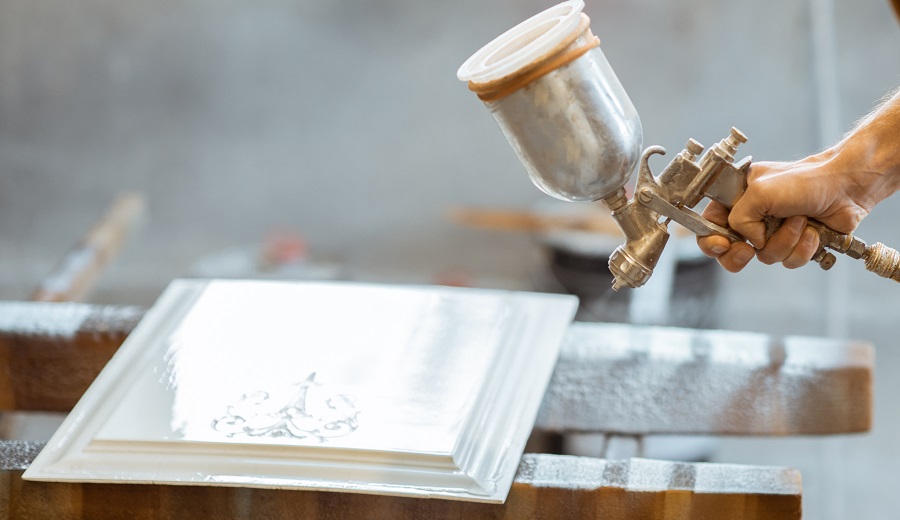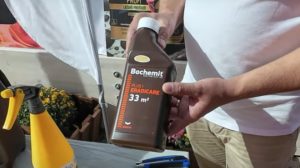I received this question from someone who is very knowledgeable about wood, but less so about painting and varnishing, preferring the natural look of the wood. tung oil. About the conditions needed to get the best gloss I've written about furniture before, but not about the combination of open-pore wood staining and high gloss, when it becomes a real challenge. That's why I found the subject interesting for professionals and enthusiasts and I'll expand on it below.

Why visible pores are a problem for shine
To ensure that the pores are not covered by the finish, are visible and thus provide the appearance of wood even if it is painted, the amount of material applied to the surface should be small. On the other hand, a very flat and well sanded surface is needed to achieve gloss, and a minimum of 2 coats of primer is needed to sand well. As you can see, the two requirements are a bit head to head. When you consider that on top of these coats comes a coat of paint, it becomes clear that it is difficult to leave the pores uncoated.
The light comes from the reflection of the world on the varnished surface. If it is not perfect the percentage of reflected rays will decrease and the gloss will not be as good. A surface on which the pores are visible cannot reflect light at 100%, so a high gloss will not be achieved. Fortunately the requirement is to get a 70 gloss surface. This too is quite high, but if certain rules are followed it can be achieved.
What are the conditions for a glossy surface
The first is for the wood to be well calibrated and polished so that the surface is free of bumps and imperfections. I have written several times about vHigh-gloss finish on MDF, a material widely used for glossy furniture. In this case, the problem of calibrating the panels disappears, as they are ready calibrated from the factory. Sanding is only done in the milled areas and that is only to remove the raised grain. With wood, the situation is different, and sizing and sanding must be done perfectly to get a quality gloss.
The conditions in the space where the primer and paint are applied are very important. The room should be free of dust, there should be no draughts to drip the still-wet film, and the temperature should be as close to the optimum 20°C as possible. These conditions are found in a pressurized spray booth. In its absence, a space as free as possible from dust must be found, away from the mechanical processing areas. High gloss finishers know that, in the event of dust particles, they can be removed by polishing. But in this case it is more difficult because the layer is thin and another sanding, however fine, could damage the surface.
The paint must be of good quality, spread very well and not make orange peel. Be applied with high-performance systems that do not include air in the film. Paintbrushing is not allowed. No matter how good the varnish is, it will not set well enough to give the desired gloss.

Here are the steps to achieve this finish
In order to achieve a quality finish, the wood must be well calibrated before starting any mechanical machining required to make the furniture. Then, once all the furniture elements are ready or the furniture assembled (depending on requirements), everything is sand again with sandpaper 180, even 220 to make the surface as smooth as possible.
The primer and paint used should both be white, of good quality and in my opinion solvent based. The solvent lifts the grain of the wood less so sanding will be easier. The amount of primer applied will be that needed for one coat, but will be applied in 2 installments. One coat means 2 passes with the spray gun on the surface to be painted, one perpendicular to the other. In this case one pass will be made, allowed to dry and then sand very well to remove raised fiber. After sanding, make the other pass perpendicular to the first and sand again after drying. This time the sanding will be lighter, just to remove small imperfections. The primer must be very spreadable (no orange peel) and have a high resin content. After each sanding, the sanding must be very well sanded so that the resulting dust does not remain in the pores.
Finally, apply the white paint, well diluted so that it spreads without orange peel. A good spray gun will help to get a bubble-free or drip-free surface. Until completely dry, the furniture should be left in a protected environment so that dust particles do not get trapped in the film and polishing will not be necessary.
Getting gloss isn't simple, even if it's just 70 gloss. There are no miracle paints, just good materials, respected technologies and the right space for such a not-so-easy task.




































Add comment